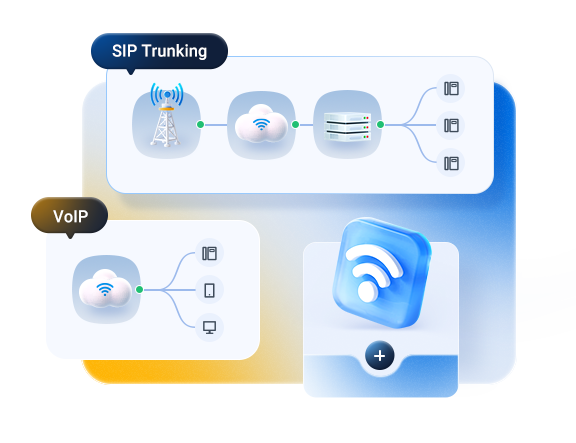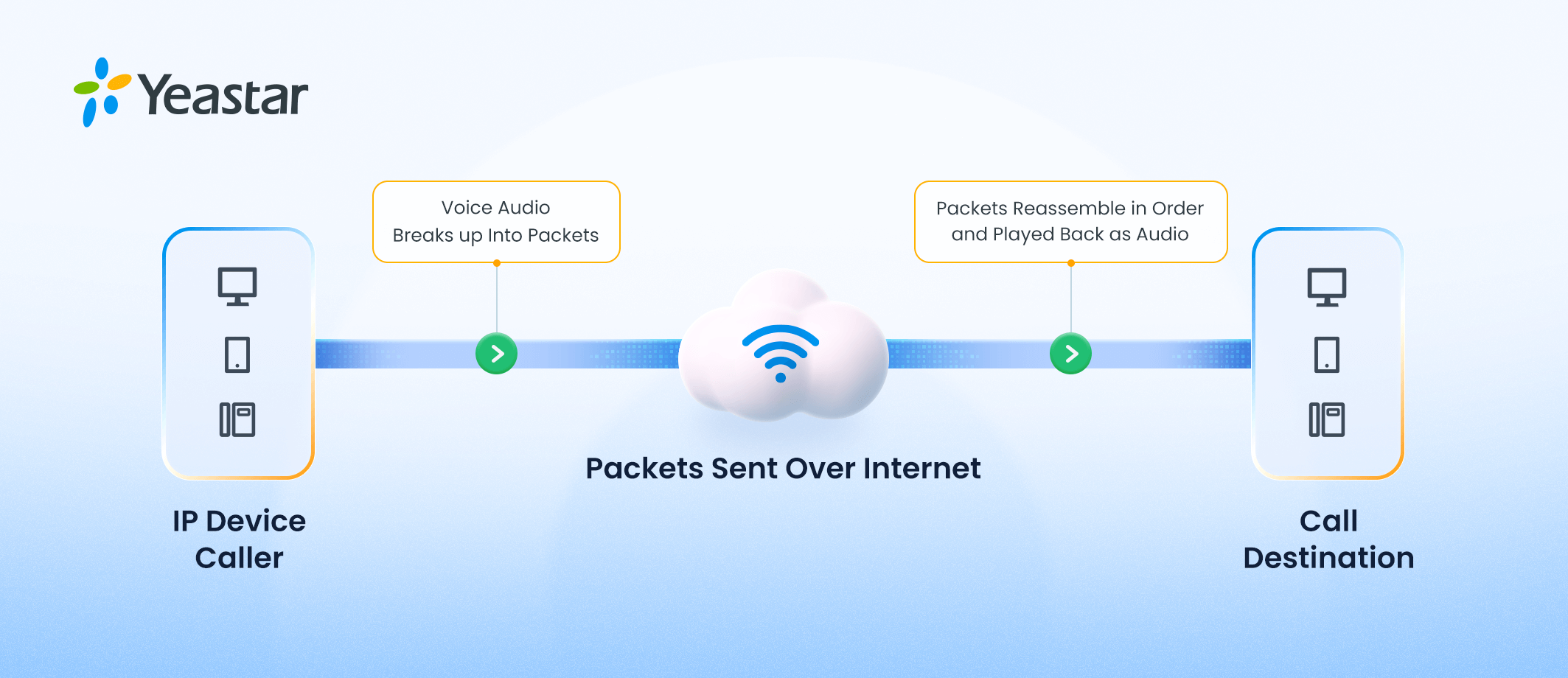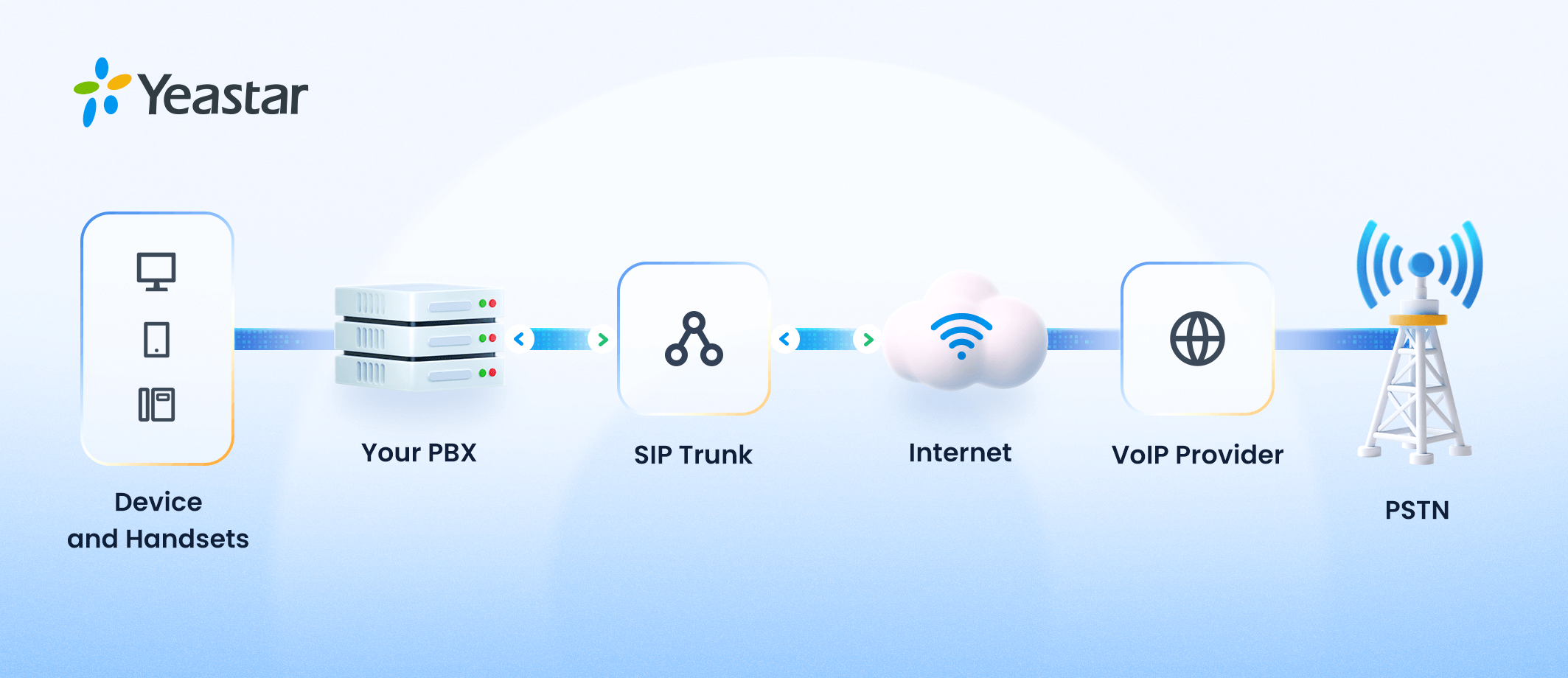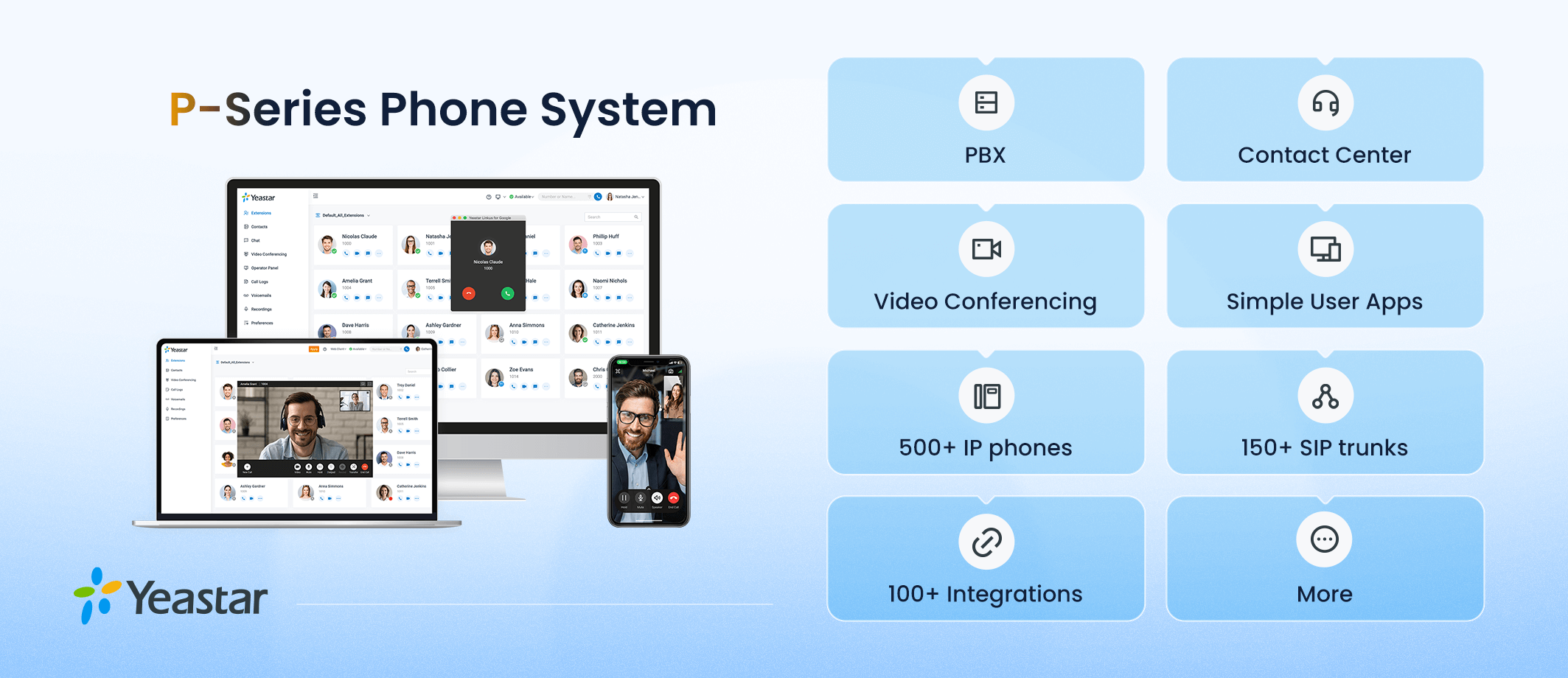
If you’re planning to modernize your business communications, you’ve probably seen the terms “SIP Trunking” and “VoIP” used interchangeably. While they’re related, they are not the same—and knowing the difference can help you make the right investment.
In simple terms, VoIP is the technology that enables voice calls over the internet, while SIP trunking is one method of connecting a business phone system to the public telephone network. Both are key parts of today’s communications landscape, and often they work best together.
In this guide, we’ll explain SIP trunking vs. VoIP, highlight their differences, show how they can work together, and help you decide which option fits your business best.
Jump to ↓
- What is VoIP? →
- What is SIP Trunking? →
- SIP Trunking vs VoIP: Key Differences →
- How SIP Trunking and VoIP Work Together? →
- How to Choose Between SIP Trunking vs VoIP? →
- Beyond SIP Trunking vs VoIP: Why Your VoIP Phone System Matters →
What is VoIP?
VoIP (Voice over Internet Protocol) is a digital phone technology that allows users to make voice calls over the internet instead of using traditional landline networks. Unlike legacy PSTN (Public Switched Telephone Network) systems—which transmit voice via copper wires—VoIP works by converting your voice into small data packets, sending them over IP networks, and reassembling them into audio at the receiving end.
How VoIP Works:
- A caller speaks into an internet-connected device (IP desk phone, softphone, mobile app, etc.).
- The device’s codec converts voice audio into data packets.
- These packets are transmitted over the internet via your router and VoIP service provider.
- At the destination, the packets are reassembled and played back as audio.
Key Advantages of VoIP:
- Easy to set up User-friendly interface
- Cost efficiency: Lower rates for domestic and international calls.
- Flexibility: Make and receive calls from anywhere with an internet connection.
- Feature-rich: Includes voicemail-to-email, auto attendants, call forwarding, and more.
VoIP is the broad technology category. It doesn’t dictate how your calls connect to the traditional phone network—that’s where SIP trunking comes in.
What is SIP Trunking?
SIP trunking is a service that connects an IP PBX system to both the internet and the PSTN, enabling VoIP calls to reach any phone number—landline or mobile—anywhere in the world.
In other words, SIP is the protocol that enables VoIP to occur, and SIP trunking is how PBX systems use SIP to connect to the PSTN. Without SIP trunks, a PBX might be able to handle internal VoIP calls within the same network, but it couldn’t make or receive calls to external traditional phone numbers.

How SIP Trunking Works:
- Your IP PBX connects to a SIP trunk provided by an ITSP (Internet Telephony Service Provider).
- The SIP trunk routes VoIP calls over the internet to your VoIP provider.
- The provider connects those calls to the PSTN for external communication.
Key Advantages of SIP Trunking:
- Bridges the gap between internal VoIP calling and external PSTN calling.
- Scalable: Integrates with existing PBX system; Easily add or remove call capacity.
- Cost-effective: No need for traditional phone lines; Often more cost-effective for high call volume
SIP Trunking vs VoIP: Key Differences
While VoIP is the broader technology for internet-based calling, SIP trunking is one specific way to implement it—particularly for businesses using PBX systems.
| Aspect | VoIP | SIP Trunking |
|---|---|---|
| Definition | Internet-based phone service without the need for on-premises PBX | Connects a PBX to the PSTN using SIP over IP networks |
| Key Features | Often includes features like messaging, video calls, call queueing, and more depending on the system type | Typically includes toll-free number support, call analytics, DID numbers, and call recording when supported by PBX |
| Communication Channels | VoIP telephony, SMS, video (varies by provider) | VoIP telephony, SMS (if supported by provider) |
| Installation | Cloud-hosted VoIP requires minimal setup; on-premises VoIP may need technical configuration | Requires IT or telecom expertise for PBX configuration |
| Integrations | Commonly integrates with UCaaS platforms, CRM systems, and productivity tools | Commonly integrates with UCaaS, CCaaS, and CPaaS platforms |
| Best For | Businesses with basic calling needs and have limited technical expertise that want a simple setup experience | Businesses with an existing PBX investment and need adv anced features and control |
How SIP Trunking and VoIP Work Together
Rather than being competing technologies, SIP trunking and VoIP complement each other. VoIP defines how voice travels over IP networks, while SIP trunking defines how those calls connect your PBX to the public telephone network (PSTN).
Example Scenarios:
- Expanding a local PBX to global reach
A retail chain with a PBX in its headquarters uses SIP trunks to connect with customers worldwide, enabling international calls while still using its existing phone system.
- Unifying multi-site communications
A multinational company integrates VoIP calling within each regional office and uses SIP trunking to centralize external communications through a single, managed PSTN connection.
- Bringing PSTN connectivity to cloud PBX
A business running a hosted VoIP PBX adds SIP trunks to reach customers on traditional phone lines, ensuring they can communicate with both IP-based and legacy phone systems.This combination allows businesses to leverage the flexibility and advanced features of VoIP while maintaining the PSTN connectivity needed for comprehensive communications.
How to Choose Between SIP Trunking vs VoIP
Selecting the right option between SIP trunking and VoIP comes down to your business setup, goals, and resources. Here are some important points to guide your decision:
Evaluate your current phone infrastructure
For companies that already operate an IP PBX, SIP trunking can extend the life of that investment while adding modern capabilities. If you have no on-premises PBX, a hosted VoIP service is often faster to roll out and requires less technical involvement.
Define your must-have features
List the communication tools you can’t work without. SIP trunking paired with a capable PBX can deliver advanced options like multi-site connectivity, CRM integration, or custom call routing. Hosted VoIP typically covers essential functions such as voice calls, basic conferencing, and voicemail (depending on the provider).
Weigh call traffic against costs
High call volumes often justify the scalability and control of SIP trunking, though you’ll also account for PBX upkeep. For lighter calling needs, hosted VoIP plans can offer predictable, lower monthly costs.
Consider system management responsibilities
With SIP trunking, your team will need to handle PBX administration, updates, and troubleshooting. Hosted VoIP shifts those tasks to the provider, reducing the internal workload and freeing up IT resources.
Plan for future growth
SIP trunking makes it easy to add capacity by increasing the number of trunks as your organization grows. Hosted VoIP providers typically offer adjustable subscription tiers so you can scale without touching your hardware.
Beyond SIP Trunking vs VoIP: Why Your VoIP Phone System Matters
Whether you choose SIP trunking, cloud-hosted VoIP, or both, your phone system is the central piece of the puzzle.
Modern VoIP phone systems integrate voice, video conferencing, team messaging, and call center features into one platform.
They also support multiple SIP trunk providers, giving you flexibility and redundancy. Yeastar’s VoIP phone systems, for example, are certified with 150+ ITSPs worldwide, ensuring compatibility and giving businesses the freedom to choose providers that best meet their needs.
Conclusion
Understanding SIP trunking vs VoIP is essential for building the right communication strategy. VoIP is the technology that delivers calls over IP, while SIP trunking is a way to connect your PBX to the public phone network. By choosing the right setup—whether that’s VoIP alone, SIP trunking, or a hybrid—you can reduce costs, improve flexibility, and prepare your business for future growth.
Looking to explore your options? Discover how Yeastar’s P-Series Phone Systems can support both VoIP calling and SIP trunking, giving you the best of both worlds. Start your free trial or schedule a live demo today to see how it can transform your business communications.




Hello Yeastar Team,
I was reading your blog about SIP Trunking vs VoIP and found it very informative. I’m interested in learning more about your Yeastar Small Business Phone System and how I can integrate SIP trunking with my existing setup.
Could you please share more details or a demo link about the configuration process and pricing for small business users?
Thank you!
Best regards,
Nayem Hasan Nahid
Hello, Nayem
I apologize for the delayed response. I have already relayed your request to my colleague, and a sales representative will be in touch with you shortly.